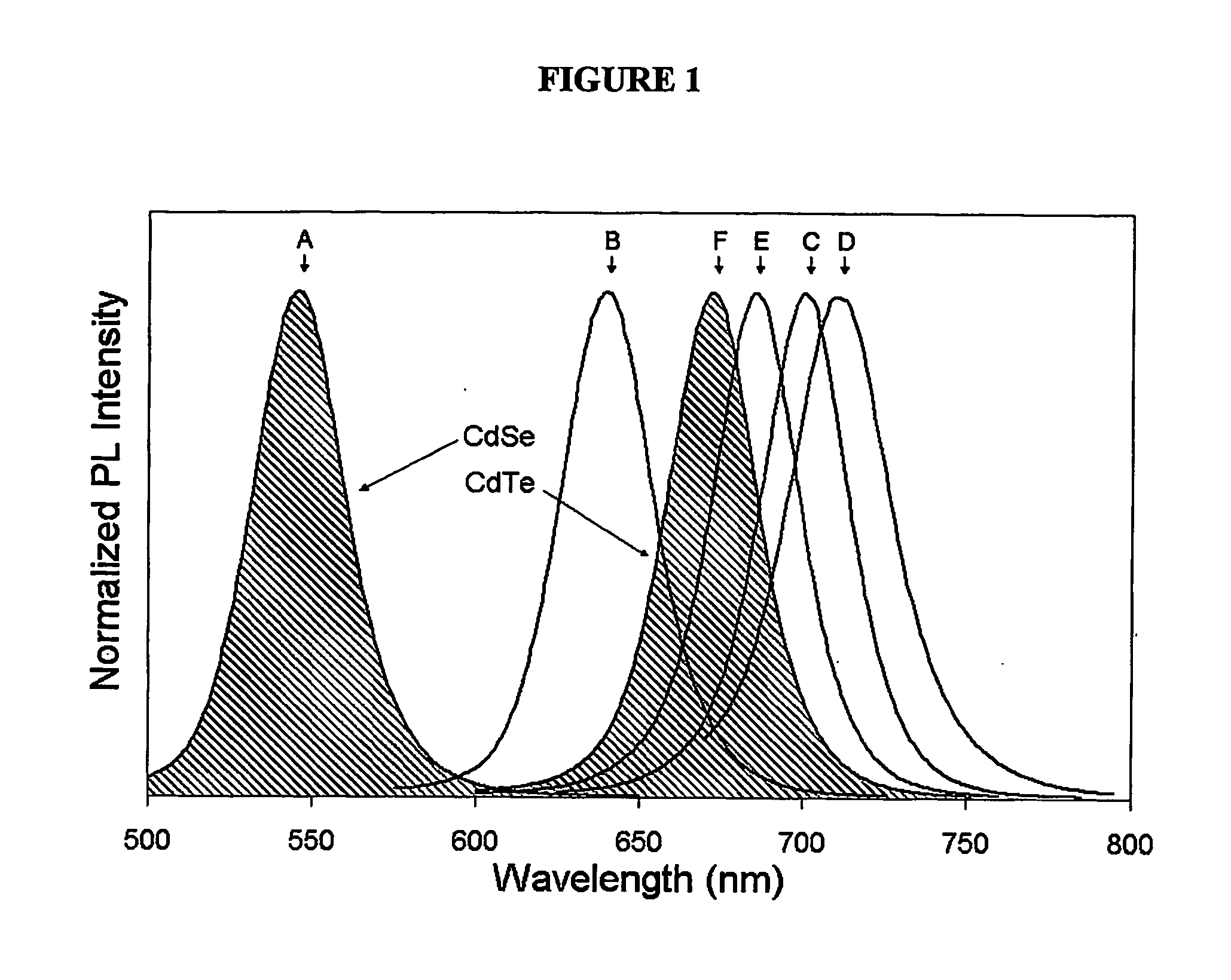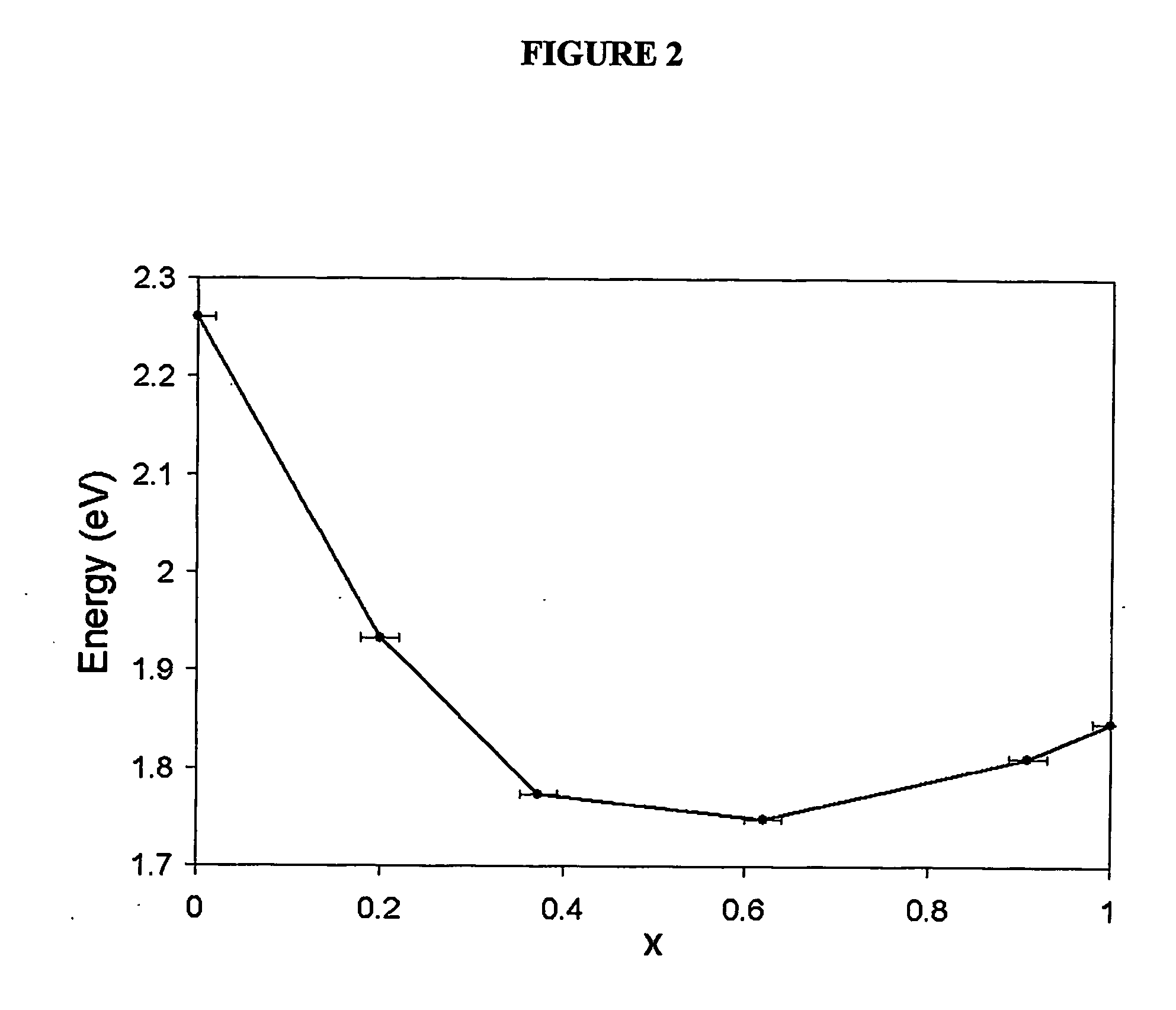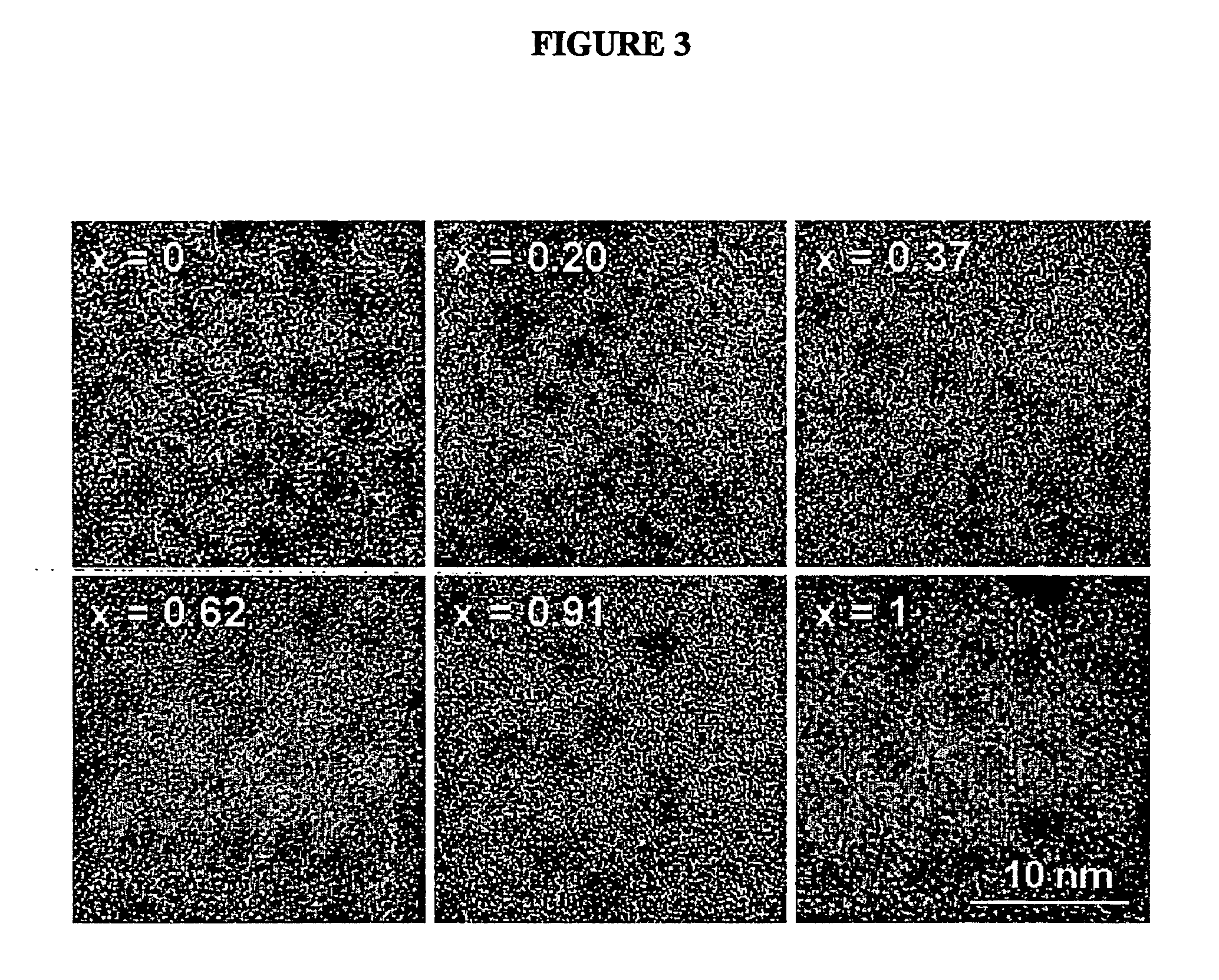Alloyed semiconductor quantum dots and concentration-gradient alloyed quantum dots, series comprising the same and methods related thereto
a technology of alloyed semiconductors and quantum dots, which is applied in the direction of selenium/tellurium compunds, phosphorus compounds, and powder delivery, etc., can solve the problems of bioconjugation and surface chemistry, binding and reaction kinetics, and the optical properties of these quantum dots, therefore, are limited
- Summary
- Abstract
- Description
- Claims
- Application Information
AI Technical Summary
Benefits of technology
Problems solved by technology
Method used
Image
Examples
example 1
[0121] This example demonstrates a method of producing a series of alloyed semiconductor quantum dots.
[0122] All manipulations were carried out under argon on a schlenk line using standard airless techniques (Jolly, The Synthesis and Characterization of Inorganic Compounds, Waveland Press (1991)). A 125 mL roundbottom flask equipped with a stop-cocked sidearm was charged with 9 g TOPO, 3 g HDA and 50 mg CdO and fitted with a septum. The flask was placed in a heating mantle and evacuated on the schlenk line. The flask was heated to 150° C. and degassed under a vacuum of 20 Pa for 15 minutes. At this point, the flask filled with argon and the temperature increased to 325° C. After the CdO was completely dissolved, the temperature was lowered to 300° C. and allowed to stabilize for several minutes. To achieve an 2-fold excess of cadmium precursor with respect to the total chalcogenide used, a syringe was charged with 0.5 ml of a premixed Se and Te stock solution containing selenium an...
example 2
[0123] This example demonstrates a study of the role of cadmium surface sites on colloidal stability.
[0124] For experiments designed to study the role of cadmium surface sites on colloidal stability, the previously described synthesis was utilized with the only change that the quantity of cadmium precursor added was adjusted to achieve the desired cadmium:chalcogen ratio. Water-soluble quantum dots (QDs) were prepared as outlined by Chan et al. (Chan et al., Science 281: 2016-2018 (1998)) using mercaptoacetic acid as the surface molecule.
example 3
[0125] This example demonstrates the synthesis of alloyed semiconductor quantum dots encapsulated in a semiconductor shell.
[0126] Nanocrystal cores of CdSe1-xTex were obtained by using the procedure outlined in the previous section. These nanocrystals were isolated by precipitation with methanol followed by centrifugation and placed into a 125 mL roundbottom flask equipped with a stop-cocked sidearm containing 12 g of TOPO. This vessel was placed in a heating mantle and evacuated on the schlenk line. The flask was then heated to 75° C. and degassed under a vacuum of 20 Pa for 15 minutes. At this point, the flask filled with argon and the temperature increased to 200° C. Shells were grown epitaxially by dropwise addition of the CdS stock solution. The optimal shell thickness was determined by periodically taking aliquots from the reaction mixture and observing the intensity of the PL peak while the CdS stock solution was added. The addition of CdS stock solution was stopped at the f...
PUM
| Property | Measurement | Unit |
|---|---|---|
| particle size | aaaaa | aaaaa |
| particle size | aaaaa | aaaaa |
| diameter | aaaaa | aaaaa |
Abstract
Description
Claims
Application Information
 Login to View More
Login to View More - R&D
- Intellectual Property
- Life Sciences
- Materials
- Tech Scout
- Unparalleled Data Quality
- Higher Quality Content
- 60% Fewer Hallucinations
Browse by: Latest US Patents, China's latest patents, Technical Efficacy Thesaurus, Application Domain, Technology Topic, Popular Technical Reports.
© 2025 PatSnap. All rights reserved.Legal|Privacy policy|Modern Slavery Act Transparency Statement|Sitemap|About US| Contact US: help@patsnap.com



